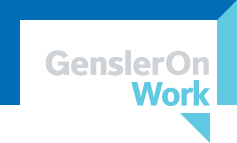The Promise and Puzzle of Mobile Work
 Chris Jerde
Chris Jerde The telephone enabled virtual communication; devices like the iPhone have taken it to whole new levels. Pictures courtesy of alfromelkhorn and Mr. T in DC.
“Mr. Watson, come here. I want to see you.” Alexander Graham Bell’s first words on a telephone — March 10, 1876
The next time you’re at your desk, emailing or instant messaging coworkers who sit within 30 feet of you, try to remember that like the meeting request sitting in your outbox, the initial communication over history’s first virtual channel was not to share information or insight but simply to request a face-to-face interaction.
Alexander Graham Bell not only invented virtual communication in 1876 but identified a key constraint of his invention: It cannot replace the effectiveness of physical presence. Flash forward 130 years, and people like myself are still trying to balance the convenience afforded by powerful mobile technologies and the basic human desire for face-to-face interaction. And this paradox has serious ramifications for the future of the workplace.
Mobile technology is giving knowledge workers the opportunity to work effectively outside of the office, and research shows that virtual work is increasing at a startling rate. Occupancy studies Gensler has conducted over the past two years show that the shift from face-to-face to virtual collaboration increased by 73 percent in the professional services industry and similarly in others (see chart below).
Source: Gensler original research. NOTE: Y-axis represents percentage of time spent working virtually.
Virtual work has benefits. It allows people to work in an airport lounges and doctor’s office. It reduces the need to commute long distances to the office or travel across the country for face-to-face meetings. But most importantly, by enabling people to unchain themselves from a particular work schedule or physical space, virtual work gives people more control of their lives. Research has shown that those who have control over how and where they work are likely to have higher job satisfaction, better psychological well-being, and better work-life balance.
Of course as we all know from experience, new innovations can have drawbacks, and there is mounting evidence that a “dark side” to virtual work exists. According to a 2011 University of Sheffield study, mobile workers have a propensity to work more hours than a standard work week (73 percent worked at least five additional hours per week). 26 percent of respondents said they worked an additional 15-20 hours per week and were more likely to say they had worked at a child’s performance event, a sporting event or a dinner date. And 32 percent of those working 15-20 extra hours per week said they connected virtually during vacation because it was expected by management and co-workers (peer pressure).
Stress is correlated with an increase in additional hours worked, and tipping the work-life balance in favor of work can actually decrease a person’s productivity during the hours they dedicate to their jobs. People working extra hours are more likely to work in the middle of the night, get poor quality sleep, and deny themselves sufficient recovery time.
It’s clear to me that virtual work hasn’t yet evolved to compensate for a lack of physical interpersonal communication. Video chat and social media can certainly help, but especially for those who live alone, working remotely can be isolating. The situation can be severe enough that researchers at the Dresden University of Technology have developed an “early warning system for virtual work” to help employers mitigate feelings of isolation, misunderstandings or decreased motivation. Is technological innovation outpacing our innate abilities to adapt to it, thereby jeopardizing its impact on our lives?
So if the workplace is under fire by the proliferation of mobile work, how are workplace designers to respond? If mobile work puts people at risk of becoming workaholic virtual drones and even de-incentivizes them to come into the office, then what is to be done?
Here’s one idea: Rather than think about the office as a program of assigned workstations and offices, let’s create less structured environments where workers want to go in order to gather. In Gensler’s Dialogue 15, Arnold Levin wrote a profile of Charles Handy, a pioneering thought leader in virtual work who argues that as technology continues to advance, the need for assigned seats will decrease. He envisions the new office as a clubhouse, a members- and guests-only type of environment characterized by fewer assigned seats, smaller and more flexible spaces, and ample spaces for informal gathering and formal face-to-face meetings. He even sees the new workplace as redefining the relationship between worker and employer: “(Workers) will see themselves as belonging to companies without being owned by them.”
Many tech companies seem to be taking this clubhouse concept to the extreme by working in modern campuses so packed with amenities that employees almost never want to leave. Is this employee empowerment or a different manifestation of the fear that employers are seeking a 24/7-relationship with their employees? Or will their model become the new standard?
There are considerable virtues to the proliferation of mobile work, primarily the empowerment of individuals to take greater control of their lives. However, there are risks and unless faced appropriately, some firms may lose their connection to the life force of their business. Workplace design will continue to play a critical role in defining, and reacting to, that balance between the virtual and the physical.
While he didn’t realize it, Mr. Bell’s request was a 21st-century one. As workplace designers, we want to ensure that Mr. Watson welcomes the occasion to respond.
 |
Chris Jerde has had a number of unique professional experiences, from working at the first Johnny Rockets hamburger store in Los Angeles to tending the music archive at the Smithsonian. But his real passion is how design affects everyday life, and since 2005 he has explored this question as a member of Gensler's Consulting practice. Contact him at chris_jerde@gensler.com. |




Reader Comments